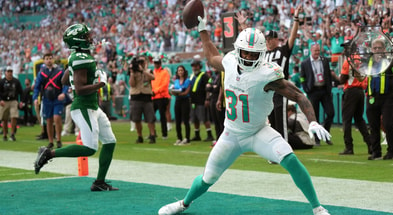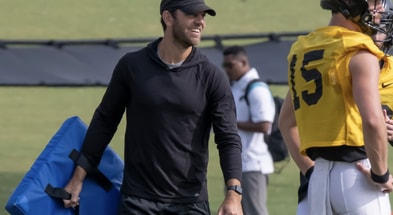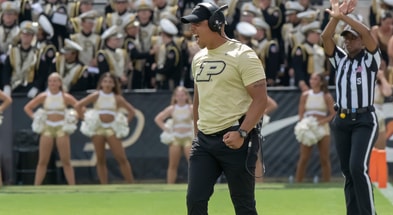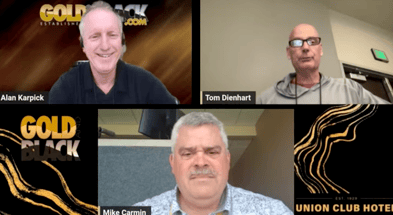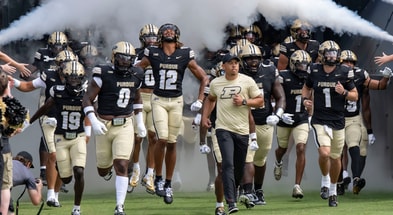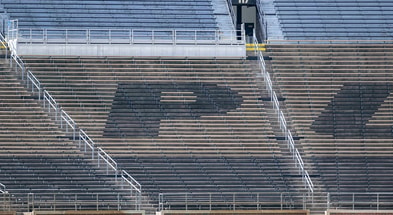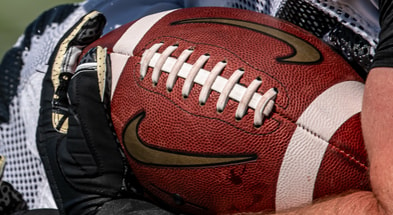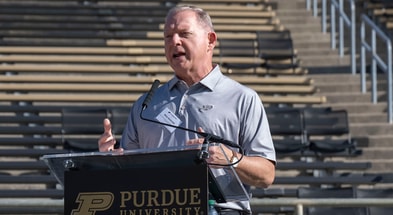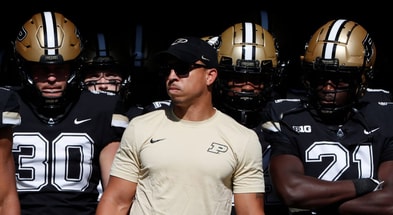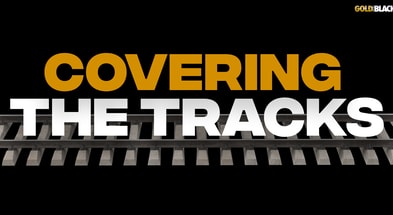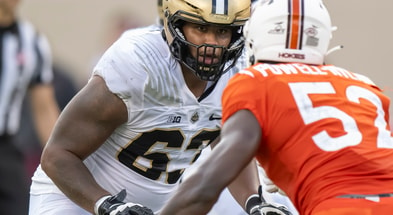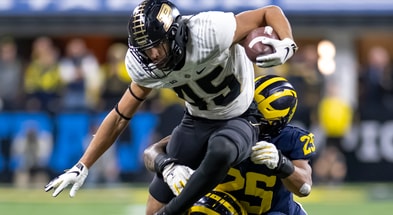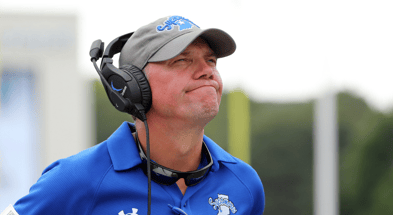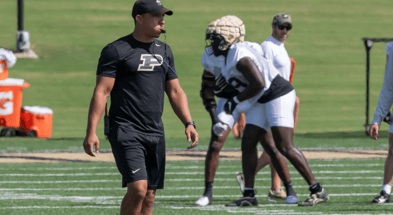NCAA lawsuit settlement brings questions regarding Title IX, athlete compensation, facility projects for Purdue
In Part 1 of an interview with GoldandBlack.com, athletic director Mike Bobinski discussed the upcoming revenue-sharing model scheduled for 2025-26 and how the new landscape impacts Purdue in the future. The athletic department will receive less money from the NCAA as part of an antitrust settlement agreed upon by the Power 5 conferences but will also need to generate an additional $22 million to pay athletes in the first year.
In Part 2, Bobinski addresses the Title IX component, what athlete compensation might look like and the settlement’s impact on future facility projects.

GoldandBlack.com: Based on what you know – and it’s not finalized – is the Title IX piece dollar for dollar, or is it based on something else?
Bobinski: Do not know. That’s one of the largest questions that needs to be nailed down to the extent that you can nail it down. We all live in the Title IX-compliant world. We all work to comply and will work to comply going forward. We’re not going to disregard Title IX, but the extent that it applies to every element of what we’re going to do moving forward remains to be seen. I think there are decisions that need to be made there, and people will have judgments about that.
We’re 57% male, 43% female, primarily due to the heavy STEM deal. That’s just the way the numbers work, and they have for a long time. All of that has to be kept in mind as you make these plans.
GoldandBlack.com: When you talk revenue sharing and use basketball as an example, you have 13 scholarships – do they all get the same amount, or do you negotiate with each player to determine their value and how much they should receive?
Bobinski: I think that’s going to be a program-by-program, institution-by-institution set of dynamics where you’re going to have to make those decisions as to how you want to manage all of that. What’s the best from an overall competitive locker room and recruiting retention? But again, a cap is a cap. You have to figure it out. It’s not like, well, we thought this, but you have a player that is better than we thought they would be. If they have to have more, somebody’s got to have less. That’s the way it works.
GoldandBlack.com: I know $22 million sounds like a big number, but when you start dividing it up – you have around 500 athletes, and not everybody gets an equal share – but does it go away pretty quickly?
Bobinski: Not that quickly. Until you make some decisions as to how that is going to be divided up, it’s hard to know how far and what that means for any specific program and also, by extension, by any individual. The reality is – and this was pointed out to us pretty clearly – the revenue that’s included in the calculation, basically close to 90%, is football generated. And so, logic would tell you – maybe not 90% – but some significant chunk of this should reside in the football world. That’s reality. Those are part of the decisions that are yet to come but have a huge impact on how you make allocation decisions and where dollars go. We have to wrestle all of that to the ground here in the months ahead to make any specific plan for the future.
GoldandBlack.com: Athletes will receive revenue sharing, but do they still have NIL opportunities?
Bobinski: For real, NIL.
GoldandBlack.com: What stops the other NIL? Bad actors are bad actors.
Bobinski: Bad actors are bad actors, but there is a 100% resolve and commitment, and in this settlement, there will be a clear prohibition against a third-party pay-for-play. But then there will be mechanisms that will be put in place, and it will probably be through a third-party clearinghouse type of thing, which the NFL has right now, to make sure sponsorships are not cap-evading type deals. They would evaluate any NIL deal that comes to the table. It will have to be reported, and then it will have to be evaluated where there are any market substances to it.
Right now, here’s a bag of cash, and the bag of cash probably existed beforehand, and people who are going to flat-out cheat are going to flat-out cheat. You’re not going to stop it, but you need an enforcement mechanism that is way more viable and quicker than anything we have today. I’m not trying to speak poorly of anybody or anything, but there’s a lot of reasons why it is that way but reconstructing that in a way that allows it to be more impactful. Those that are willing to take the risk of dealing from the bottom of the deck need to understand that in fact, if this comes to light and I’m found responsible for doing something, it’s going to hurt and hurt in a real way. Right now, that doesn’t exist. People are willing to roll the dice because what’s going to happen? The punishment does not cause anybody any pause.
GoldandBlack.com What does revenue-sharing mean for facility projects moving forward?
Bobinski: I can speak to my eight years here, and every single project we’ve done has been cash and carry. We haven’t had any debt finance. It’s been donor-funded. Thankfully, our donors have been willing and capable of supporting us, and I think that’s going to continue to be the case. In the meantime, ones with a revenue component that can ultimately help pay off or add to your revenue and meet the expenses of the new world will probably move up in priority. Things that are nice to have, maybe shiner versions of what you have, maybe move down in priority. That’s going to be a dynamic that would make sense for me to see evolving in the years ahead.
We have things that we want to continue to do in the football stadium. We want to get our arms around this circumstance before we actually go to the full planning stage, but there are things that have revenue implications that I think will bubble up here not that far down the road, and we will go to our donor base and find what they’re able and willing to support going forward. They’ll continue to feel that it is a worthy undertaking, just like there are people who love scholarships and all those things. Everybody has their own personal preference as to what matters most to them.
GoldandBlack.com: I don’t think you had set a timeline for Phase 2 of Ross-Ade.
Bobinski: We have not.
GoldandBlack.com: Is that no longer a front-burner issue?
Bobinski: We may have moved it to the side. It’s not off the stove. I can tell you that, right now, the magnitude of what’s coming is so significant that it behooves us to figure this out before you can really get serious about what’s next from a stadium improvement perspective.


